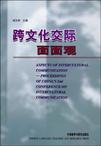跨文化交际面面观
出版时间:1999-11 出版社:外语教学与研究出版社 作者:胡文仲 编 页数:650
Tag标签:无
前言
Chinas 1st Intercultural Communication Conference washeld at the Harbin Institute of Technology in the summer of1995. It was during this conference that the China Associationfor Intercultural Communication (CAFIC) was created and aleading body elected. Two years later CAFIC, Beijing ForeignStudies University and Foreign Language Teaching and Re-search Press (FLTRP) jointly sponsored the 2nd conference,which took place in Beijing from October 11 - 14, 1997. It wasattended by more than 80 participants, some of whom camefrom overseas. In addition to some 70 papers presented therewas a workshop run by Torrey Orton and his colleagues ontrust, trustworthiness and reliability in Chinese-foreign busi-ness relationships. In spite of some inadequacies and shortcom-ings in arrangement and logistics, it was a successful and fruit-ful conference, which enabled intercultural communicationistsin China and overseas to exchange ideas on theoretical issuesas well as issues of immediate concern. I was entrusted to edit for publication the papers presentedat the conference. As any editor would know, the greatest dif-ficulty lies in judicious selection. Since it was unrealistic to in-clude all the papers I had to do the unenviable job of leavingout about half of them. To all those whose papers are not with- in the pages of this volume I offer my deepest apology.
内容概要
《跨文化交际面面观》从文化人类学,社会语言学,实用语言学的角度分析了跨文化交际中产生的冲突及交际失误等问题。文章指出,人们的交际方式,语言选择,交际策略的差异也会造成交际中的误解与阻隔。论文的结论是:文化差异是跨文化冲突的主要原因。文化是背景,而社会语言现象,社会群体意识,社会心理规范是前景。只有以客观公正的态度去观察、评价、理解不同的文化,才能使跨文化交际更有成效。
书籍目录
Preface Part One Theoretical ConsiderationsReconstructing Humanistic and Stylistic Traditions in Chinese Rhetorlc-A Contrastive Approach(Gu Yueguo)Real ity Set,Discourse Analysis,and Discourse with a Capital ‘D’一The Rectification of Names in Discourse and Critical Discourse Analysis(Ron Scollon)The Structure of Culture and Intercultural Communication Studies——Some Critical Comments(He Minzhi)Revisiting Cultural Relativism in Our Global Village(Lin Dajin)Analysis of Intercultural Encounters and Miscommunication (Wu Cuiyu)The Tao and Qj of Intercultural Communication Competence (Gao Yihong)Communication Industries:Opportunities and Challenges on a Global Scale(Zhang Yonghua)Insider and Outsider in Intercultural Research(Chen XiangmingPart Two Language and CultureA Tentative Comparison of First Naming Between Chinese and American English(Du Xuezeng)The Cultural Implication of the Chinese Cuisine Naming(Wang Fengxin)Cultural Connotation of Animal Words in English and Chinese (Chen Dezhang)Branding Culturally:An Intercultural Communication Viewpoint(Li Zhenyi)Culture as Social Discourse——A Comparison of Two Volvo Advertisements(Zhang Chaoyi)English Idioms-A Mirror Reflecting British Culture r Ping Hong and Zhang Guoyang)Expressions of Social Interaction in Chinese and Arabic-AComparative Approach(Zhu Licai)Part Three Cultural Differences in Discourse and Communicative StyleIndirectness Revisited——On the Communicative Style in Two Types of Chinese Letters(Hu Wenzhong)Cultural Characteristics of Indirectness(Bi J iwan)Pol iteness in Correspondence Discourse——A Contrastive Study (Liu Dailin)Biased Discourse in Contrastive Rhetorical Study(Li Zhanzi)Part Four International Business and OrganizationsInternational Organizations:Their Communication and Language Aspects(Hu Gengshen)Naming and Framing(Jane Orton)Problem-Solving VS.Relation-Building:Frame Analysis of a Negotiation between Americans and Japanese(YoshikoNakano)What Professional Communicators Say about OrganizationaI Creativity:Lessons from Hong Kong(Richard A Ruidl)Cross-Cultural Influence 0n Management of Multinational Corporations(Kong Ying)Part Five Value DifferencesInterpersonal Relationship and Intercultural Communication:East and West(Jia Yuxin)The Influence of Cultural Individualism-Collectivism and SelfConstruals on Hong Kong Peoples Style of Acquiring In formation in Initial Encounters(Feng Qi)Asian Values Revisited in the Context of Intercultural News Communication(Xu Xiaoge)Part Six English as an International LanguageEngl ish as a Language for International Communication:An Asian Perspective(Nobuyuki Honna)Sociolinguistic Situation in Singapore(Tina Tajima)The Linguistic and Cultural Division of Englishness in English as an International Language(Wang Zhixin)Part Seven InterculturaI Communication Publications,etcA New Phase in Comparative Culture Studies——A Review ofRecently Published Intercultural Communication Works (He Daokuan)Intercultural Communication on the Internet——The HowS and WhyS of ChinaS Voice on the Internet(Li Zhan)
章节摘录
Five(about 20%)students got completely correct answers for all the 15 questions,while the average number of correct answers were between 12-13(12.45).(For questions which have two parts,mistake in either part would make this answer incorrect.)The percentage of correct answers was 84%(288 in a total of 345 answers). Of the questions asked,No.2(responding to compl iment)and No.7(the color of wedding gown)had the highest correct rate(100%).This means that everybody in the class knows that the correct response to a compl iment is“thank you”and that a Western bride wears a white gown.Students also did quite well on other verbal communication questions on greet-ing(1 wrong answer),age and salary as inappropriate conver-sation topics(2 wrong answers)and sneeze(4 wrong an-swers-all knew the person who sneezes says“excuse me”.but were not sure what the person beside the sneezer would say).The worst part was on questions of etiquette:9 students did not know if it is alI right to ask for drinks or should wait to be offered,and 10 were not sure if the guest was supposed to fin-ish the food on his plate.In terms of the sources of informa-tion,English classes are the chief information provider for ver-bal communication questions(Questions 1 to 5),Western TV and movies for non-verbal communication questions(Questions 6 to 7),and the combination of the two for questions on eti-quette(the rest).(see Appendix II) The result of the survey shows that young educated Ch.nese have a fair knowledge of culture in the West,and that our teaching of the English language has been quite a SUCCESS in this respect.
图书封面
图书标签Tags
无
评论、评分、阅读与下载
用户评论 (总计5条)
- 比较厚的一本书,拿来学习。 注意内容是全英文的。适合英语专业的人使用。
- 了解中英文化差异
- 不错,老师推荐的书,还好
- 可惜是英文版的。本人英文水平一般,看一篇两篇的还有耐心,但通读一本书就有点受不了了。如果本书有汉语版的,我就能好好读一下了。
- 到现在我依然未收到书,我不知道哪里出了问题,都快一个月了,请查一下,谢谢
